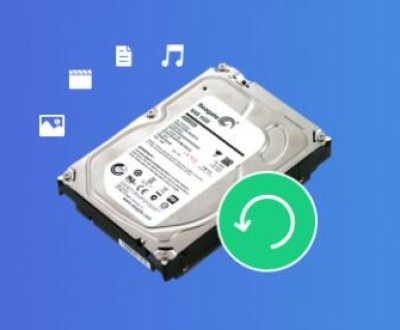Data loss can be devastating, especially when it involves important files like MISO files (or a specific file type you’re referring to). Whether the files were accidentally deleted, formatted, or corrupted, the good news is that you can often restore these files for free with the right tools. This guide will walk you through various free file recovery methods, software options, and practical steps you can take to restore your MISO or other critical files.
Data loss can happen for various reasons, including:
Accidental deletion: You accidentally delete files and empty the recycle bin, thinking they are gone for good.
Formatting: Formatting a disk or partition might remove all data on it, but this doesn’t mean the files are irretrievable.
Corruption: Files may become inaccessible due to disk corruption, bad sectors, or malware.
Physical damage: Hard drive or USB damage might prevent access to files, though some recovery methods still work.
This guide focuses on using free methods and tools to restore files, assuming the damage is logical (software-related) rather than physical (hardware failure).

2. Methods to Restore Files for Free
2.1. Check the Recycle Bin (or Trash)
Before using specialized recovery software, start with the basics. When files are deleted, they usually go to the Recycle Bin on Windows or the Trash on macOS, where they stay until emptied.
Steps:
Open the Recycle Bin or Trash.
Search for the deleted MISO or other file types.
Right-click the file and choose “Restore.”
This method won’t cost you anything, and it works immediately if the files haven’t been permanently deleted yet.
2.2. Restore from Previous Versions (Windows)
If you are using Windows and have enabled file history or system restore points, you can restore previous versions of your files. This method works when you want to recover files from a point in time.
Steps:
Navigate to the folder where the deleted MISO file was stored.
Right-click the folder and select “Restore previous versions.”
A list of available versions will appear. Select a version that contains your missing files.
Click “Restore” to bring back the older version of the file or folder.
This is a quick and free method to recover lost data using built-in Windows tools.
3. Free Data Recovery Software
Panda Assistant is an advanced data recovery software designed to help users retrieve lost, deleted, or corrupted data from various storage devices. Whether you’ve accidentally deleted files, experienced a system crash, or suffered from data corruption, Panda Assistant provides an intuitive and powerful solution to restore your valuable information without hassle.
Key Features of Panda Assistant
Comprehensive Data Recovery
Panda Assistant supports the recovery of a wide range of file types, including documents, photos, videos, audio files, and more. It works across various devices such as hard drives, USB drives, SD cards, and external storage media, ensuring that no matter where your data is stored, you can recover it.
User-Friendly Interface
Designed with ease of use in mind, Panda Assistant offers a simple and intuitive interface suitable for both beginners and advanced users. With just a few clicks, users can initiate scans and recover their lost files without needing extensive technical knowledge.
Quick and Deep Scan Modes
Panda Assistant features two scanning options: quick scan and deep scan. The quick scan allows users to retrieve recently deleted files in minutes, while the deep scan thoroughly analyzes storage devices to locate more complex or hidden data, ensuring a higher recovery success rate.
Preview Before Recovery
Before recovering files, Panda Assistant allows users to preview recoverable files to ensure they are restoring the correct data. This feature saves time and effort, making the recovery process more efficient and targeted.
Cross-Platform Compatibility
Panda Assistant is compatible with both Windows and macOS, making it a versatile solution for users on different operating systems.
4. Cloud Backup Services
If you’ve been using a cloud backup service like Google Drive, Dropbox, or OneDrive, you can restore your MISO files from the cloud.
4.1. Google Drive
If your files were backed up or synced to Google Drive, restoring them is easy.
Steps:
Open Google Drive in your browser.
Search for the deleted MISO files using the search bar.
If you find the files, download them back to your device.
4.2. Dropbox
Dropbox also allows you to restore deleted files within 30 days of deletion.
Steps:
Open Dropbox in your browser and navigate to “Deleted Files.”
Search for the file you wish to restore.
Select the file and click “Restore.”
5. Advanced Methods for Complex Data Loss Situations
5.1. Recovering Files from a Formatted Drive
If you have accidentally formatted a drive containing MISO files, don’t worry; they might still be recoverable.
Steps:
Use a tool like Disk Drill or Recuva to perform a deep scan.
Choose the formatted drive as the location and start the recovery process.
Once the scan is complete, select the MISO files from the list and restore them.
5.2. Recovering Files from Corrupted or Damaged Drives
If the drive is corrupted or has bad sectors, use software like PhotoRec or TestDisk to scan for recoverable files. If the file system is severely corrupted, consider seeking professional data recovery services.
5.3. Using Bootable Media for Data Recovery
If your operating system won’t boot, you can create a bootable USB stick with recovery software like Recuva or PhotoRec and run it on the corrupted system.
6. Preventing Future Data Loss
While free recovery software can save your data in many cases, prevention is always the best solution. Here are a few steps to prevent future data loss:
6.1. Use Cloud Backup Solutions
Regularly back up important files to the cloud using services like Google Drive, Dropbox, or OneDrive.
6.2. Use External Backup Drives
Keep backups on external drives or NAS systems (Network Attached Storage) to ensure you always have a copy of your important data.
6.3. Use Data Recovery Tools Wisely
Always perform data recovery on a different drive from the one that holds the lost files to avoid overwriting data.
About us and this blog
Panda Assistant is built on the latest data recovery algorithms, ensuring that no file is too damaged, too lost, or too corrupted to be recovered.
Request a free quote
We believe that data recovery shouldn’t be a daunting task. That’s why we’ve designed Panda Assistant to be as easy to use as it is powerful. With a few clicks, you can initiate a scan, preview recoverable files, and restore your data all within a matter of minutes.
Subscribe to our newsletter!
More from our blog
See all postsRecent Posts
- How to save tiktok videos on computer 2025-04-30
- How to watch gopro videos on computer 2025-04-30
- How to save video from blink video doorbell to computer? 2025-04-30

 Try lt Free
Try lt Free Recovery success rate of up to
Recovery success rate of up to









